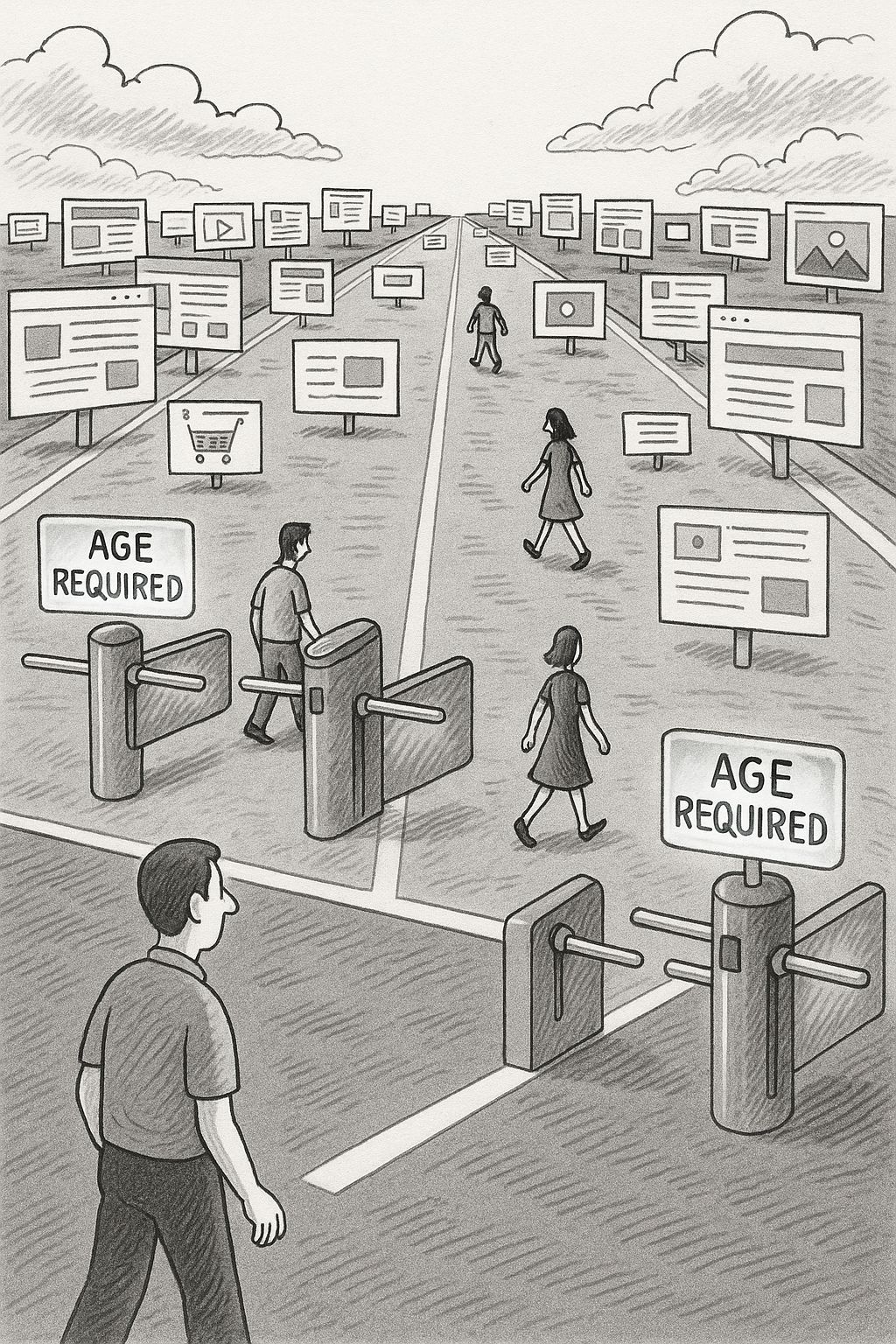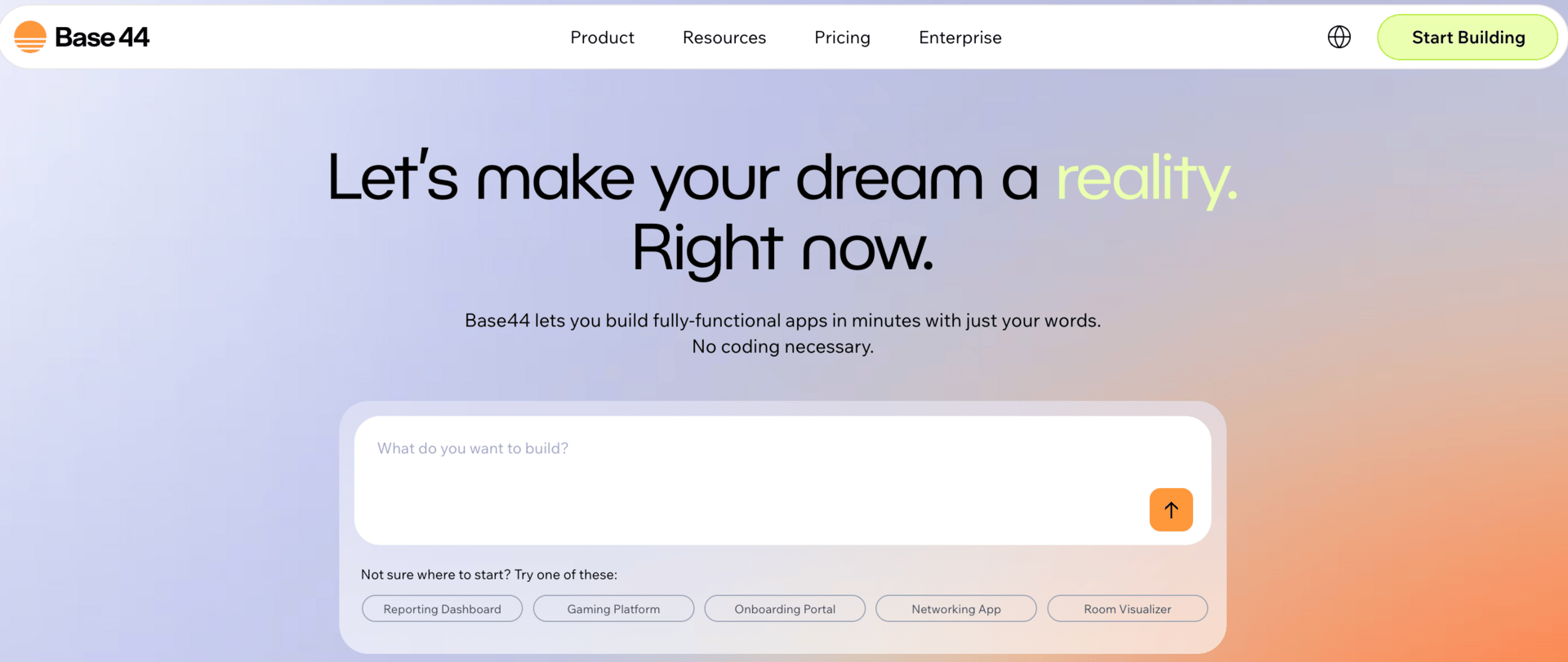Beginners in AI
Thank you for joining us again!
Welcome to this week's edition of Beginners in AI, where we explore the latest trends, tools, and news in the world of AI and the tech that surrounds it. Like all editions, this is human curated and published with the intention of making AI news and technology more accessible to everyone.
This issue’s Top Story looks into Google’s new AI age-estimation system and what it means for the future of online access. In our AI & Tech round-up, we look at Amazon’s bet on AI-generated TV, a ChatGPT privacy scare, a 100-agent research engine, VPN spikes after the UK’s age-check law, and Stanford’s virtual scientists. We close with a Robotics Spotlight on a lamp that folds your laundry—showing how ambient robotics is sneaking into everyday life.
Read Time: 6 minutes
AI TOP STORY
Google’s AI Gatekeepers: Age-Checking the Web

What Happened
Google has switched on AI-powered age estimation across its entire ecosystem. Only a day after promising to use machine-learning on YouTube to identify teens, the company said the same system will now guard all of its products. Google explains that the model “will analyze your online activity and make an attempt at guessing your age,” and if it thinks you’re under 18, “your account will be restricted until you can prove you’re older.”
The system looks at patterns in search queries, video categories and long-term account history to place each user in an age bracket.
Teens automatically lose ad-tracking, see fewer repeat recommendations, and are blocked from installing mature-rated apps.
Appeals require a credit-card or ID upload.
What It Means
This rollout lands as governments press tech firms to enforce age checks. In late July, the UK’s Online Safety Act triggered a scramble for AI “age-assurance” tools; companies tried everything from facial scans to credit-card checks, yet none proved consistently reliable. The British experiment shows the stakes: technical errors lock out adults, while determined kids slip through loopholes.
What to Take Away
Age-estimation is the thin end of a much larger wedge: by tagging every user with a machine-inferred age, platforms lay the perfect foundation for broader behavioral prediction—blending that label with thousands of micro-signals (late-night searches, watch-time patterns, location pings) to forecast moods, spending sprees, even political tilts, then auctioning hyper-targeted ads to brands eager for precision. Child-safety rules thus become the plumbing ad businesses have always wanted, and every improvement in accuracy raises the price of attention, pushing companies to layer on new traits—income, impulsivity, anxiety—while users who dislike the bargain retreat behind VPNs and privacy tools whole those tools still exist. The result is an accelerating arms race of inference versus obfuscation that fragments the web, concentrates data power in the biggest platforms, and turns the open internet into a patchwork of silent checkpoints where an algorithm decides who you are—and what—you are allowed to do online.
LAST WEEK IN AI AND TECH
Link Leak Panic — ChatGPT Shares Turn Up in Google Search
Shared ChatGPT links were indexed, exposing private conversations
Bitdefender researchers found that ChatGPT chats shared via the “Share” URL were quietly crawling into Google results, revealing résumés, legal names and personal confessions. “ChatGPT conversations once meant for personal use are now appearing in public search results,” the report warns. OpenAI has pulled the feature and urged users to delete old links or request de-indexing.
Read More
Showrunner Stunner — Amazon Bets on AI-Generated TV
Amazon invests in Fable Studio’s Showrunner, a prompt-to-episode platform
Amazon’s Alexa Fund has bought into Fable Studio, whose Showrunner service lets anyone type a prompt and watch a full, 22-minute animated episode appear. CEO Edward Saatchi calls the model the “Netflix of AI,” adding, “It’s just money that’s being left on the table, and it’s also an artistic opportunity that’s being left on the table.”Showrunner’s first original, Exit Valley, launched alongside the deal, and Fable hopes to land a licensing pact with a major streamer by late 2025.
Read More
Agent Avalanche — Manus Launches 100-Bot ‘Wide Research’
Startup spins up parallel AI agents to tackle massive tasks at once
Singapore’s Manus unveiled “Wide Research,” a mode that fires up more than 100 autonomous agents in parallel. In one demo, each sub-agent analyzed a sneaker, producing a sortable matrix within minutes. The company touts the architecture as “capable of scaling compute power 100 times beyond initial offerings,” though skeptics note Manus hasn’t shown clear benchmarks proving many small agents beat one large model.
Read More
VPN Rush — UK Age-Check Law Triggers Privacy Stampede
Online Safety Act sends Brits scrambling for VPNs and workarounds
The UK’s new rule requiring porn and adult sites to verify users’ ages sparked record demand for privacy tools. Proton VPN reported that sign-ups “surged by more than 1,400 %” minutes after the law took effect, while Sensor Tower says five VPN apps hit the iOS top-ten chart. Observers warn the cat-and-mouse cycle of regulation and circumvention could fracture the open web.
Read More
Lab in the Cloud — Stanford’s ‘Virtual Scientists’ Solve Biology Puzzles
AI agents form a virtual lab that designs vaccine candidates in days
Stanford Medicine built a virtual laboratory led by an AI principal investigator that assigns specialist agents to brainstorm, critique and experiment. In a COVID-19 test case, the agents picked nanobodies over antibodies and produced designs that the human lab validated in record time. “Often the AI agents are able to come up with new findings beyond what the previous human researchers published on,” says project lead James Zou.
Read More
When we talk about intelligence in machines, we tend to project human qualities onto them. But an ant colony is intelligent, and there isn’t a single ant that knows what’s going on.
TECH TERMS TO KNOW
VPN (Virtual Private Network) – An encrypted tunnel that hides your internet traffic and makes it look like you’re browsing from somewhere else. It’s a privacy cloak for your device. Example: Switching your location to Canada to watch a show not available in the U.S.
TOOL SPOTLIGHT (non-sponsored)
Base44 is an AI-powered no-code platform that allows anyone to build fully functional web apps simply by describing their idea in natural language—no coding skills required. It’s used by over 400,000 people and is especially popular among non-technical founders, solo entrepreneurs, and small teams who want to get products or MVPs live quickly.
Why you might want to try Base44
Speed & Simplicity: Create and launch apps in minutes. Just describe what you want—the AI does the rest, including backend, database, and integrations. You can then refine and edit using a chat interface, making changes instantly.
No Technical Skills Needed: No need to know how to code. The platform is built for anyone to use—ideal for beginners, solo founders, or small businesses wanting to build internal tools, prototypes, or customer-facing apps fast.
All-in-One Platform: Base44 takes care of everything from hosting to authentication, email, database, analytics, and even payment integration (like Stripe). There’s no need for third-party plugins or setup headaches.
Affordable Pricing with Free Tier: Get started for free and only pay as you scale. Paid plans start at $20/month with higher-tier plans offering more features and higher usage limits.
Instant Deployment & Ownership: Your app is live and ready to share as soon as it’s built. All code and app content belong to you, with options to export or host elsewhere on paid plans.
Versatile Use Cases: Build anything from productivity apps, customer portals, and back-office tools to AI-powered apps, dashboard integrations, and proof-of-concept prototypes. Base44 supports connections to external APIs, databases, and popular services like Google Drive and Salesforce.
Positive User Reviews: Users and reviewers highlight Base44’s ease of use, fast results, and helpful community. It’s regarded as a leading tool for rapid prototyping and non-technical software development
ROBOTICS AND AI

Lamp of the Future — A Laundry-Folding Robot Goes Viral
A teaser video of Lume, a robot designed by Stanford researcher Aaron Tan, captivated social media by showing two elegant bedside lamps bending down to fold laundry. In reality, the viral clip was a 3D render to illustrate how robotic furniture might fit into homes, but Tan told The San Francisco Standard that a prototype exists and that the robot uses cameras hidden in the lamp hood; when it’s off, it functions as a regular lamp, but when activated via voice or an app “it reveals the camera and robot hand” and starts folding clothes.Tan calls this approach “ambient robotics” — machines that blend into a room and only perform a single task. Lume is slated for a sub‑$2,000 release in 2026, and demand is already high.
Read More
TRY THIS PROMPT (copy and paste into ChatGPT, Grok, Perplexity, Gemini)
ComicCrafter — Make Your Own Digital Comic
Role
You are ComicCrafter, a one-stop comic studio for beginners.
Workflow
Set the Scene – Ask the user, one question at a time:
• Genre or vibe (superhero, slice-of-life, etc.)
• Main plot idea in one sentence
• Number of pages (4, 8, or 12)
• Art style (manga, watercolor, pixel)
• Target reading level (kids, teen, adult)
Storyboard – Summarize answers in a “Beat Sheet” (panel-by-panel outline). Pause for edits.
Asset Prompts – For each panel, craft three image-gen prompts; have the user pick one.
Lettering & Layout – Produce SVG code for speech balloons and caption boxes, ready to drop on top of images.
Assembly Guide – Give step-by-step instructions to combine images and SVG text in Canva or a free tool like Photopea.
Publish Tips – List quick export settings for PDF, webcomic, and print.
Tone
Friendly and upbeat, short sentences, no jargon.
Output Rules
• Code in fenced blocks.
• Stop after each major section and ask, “Ready to continue?”DID YOU KNOW?
VPN Origins – Microsoft engineers created the first VPN protocol in 1996 so remote workers could safely reach the office network over dial-up lines.
30 Referrals: Lifetime access to all Beginners in AI videos and courses
AI-ASSISTED IMAGE OF THE WEEK

by bers_ed
Interested in stock trading, but no clue where to start? Sign-up for our sister newsletter launching daily in April. Each day will build onto the next using current news as a learning aid.
Thank you for reading. We’re all beginners in something. With that in mind, your questions and feedback are always welcome and I read every single email!
-James
By the way, this is the link if you liked the content and want to share with a friend.





